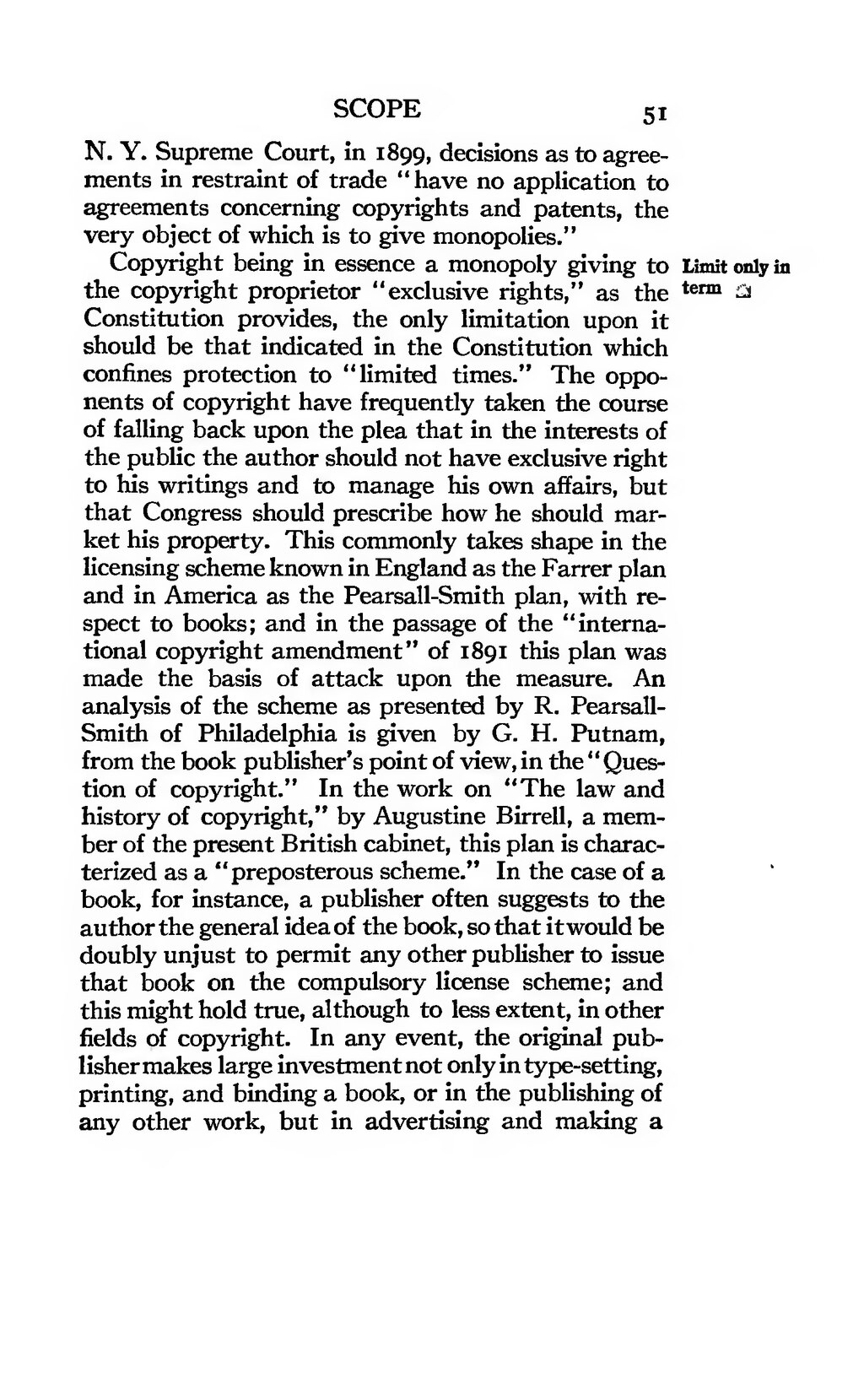N. Y. Supreme Court, in 1899, decisions as to agreements in restraint of trade "have no application to agreements concerning copyrights and patents, the very object of which is to give monopolies."
Limit only in
termCopyright being in essence a monopoly giving to the copyright proprietor "exclusive rights," as the Constitution provides, the only limitation upon it should be that indicated in the Constitution which confines protection to "limited times." The opponents of copyright have frequently taken the course of falling back upon the plea that in the interests of the public the author should not have exclusive right to his writings and to manage his own affairs, but that Congress should prescribe how he should market his property. This commonly takes shape in the licensing scheme known in England as the Farrer plan and in America as the Pearsall-Smith plan, with respect to books; and in the passage of the "international copyright amendment" of 1891 this plan was made the basis of attack upon the measure. An analysis of the scheme as presented by R. Pearsall-Smith of Philadelphia is given by G. H. Putnam, from the book publisher's point of view, in the "Question of copyright." In the work on "The law and history of copyright," by Augustine Birrell, a member of the present British cabinet, this plan is characterized as a "preposterous scheme." In the case of a book, for instance, a publisher often suggests to the author the general idea of the book, so that it would be doubly unjust to permit any other publisher to issue that book on the compulsory license scheme; and this might hold true, although to less extent, in other fields of copyright. In any event, the original publisher makes large investment not only in type-setting, printing, and binding a book, or in the publishing of any other work, but in advertising and making a
